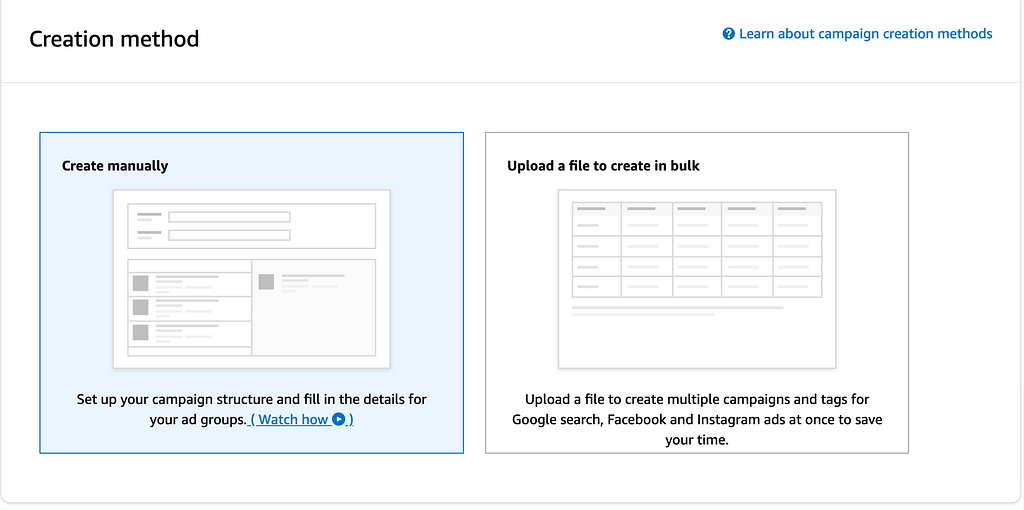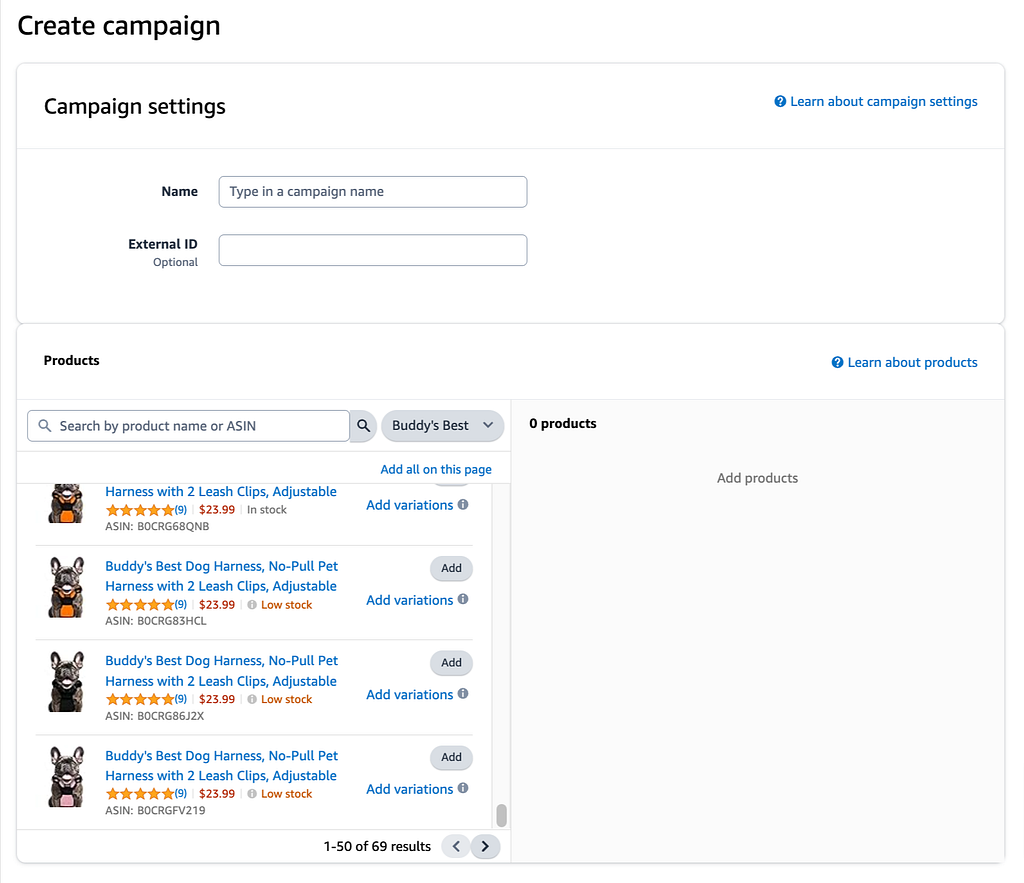
Closing the loop between advertising efforts and sales has been the holy grail for marketers.
Surprisingly, many Amazon sellers and vendors have yet to fully embrace the tool's power to help deliver those insights: Amazon Attribution.
What is Amazon Advertising Attribution?
Amazon Attribution allows you to measure the impact of your non-Amazon advertising investments and link them directly to e-commerce outcomes, such as sales and conversions.
Despite these opportunities, many on Amazon Seller Central and Amazon Vendor Central have yet to capitalize on the potential of Amazon Attribution.
Who can use Amazon Attribution?
The service caters to many users, including sellers, vendors, agencies, brands, and consultants. Let’s explore how each group can benefit from using it.
- Sellers: Amazon sellers, whether part of the Fulfilled by Amazon (FBA) program or handling their fulfillment, can use Amazon Attribution to measure the impact of their off-Amazon marketing efforts. By implementing attribution tags in their non-Amazon campaigns, sellers can gain valuable insights into which channels, tactics, and creatives drive the most sales on Amazon. This information allows sellers to optimize their advertising strategy, allocate budgets more effectively, and ultimately increase their return on advertising spend (ROAS).
- Vendors: Amazon vendors who sell their products directly to Amazon can also leverage Amazon Attribution to understand the effectiveness of their non-Amazon advertising campaigns. By linking their off-Amazon marketing investments to sales and conversions on Amazon, vendors can make data-driven decisions to improve their advertising performance. Amazon Attribution provides vendors with a comprehensive view of their customer’s journey, enabling them to identify which touchpoints are most influential in driving sales.
- Agencies: Marketing and advertising agencies that manage campaigns for their clients can use Amazon Attribution to demonstrate the value of their services. By implementing attribution tags in their clients’ non-Amazon campaigns, agencies can provide concrete evidence of how their efforts contribute to sales and conversions on Amazon. This transparency strengthens the agency-client relationship and helps agencies justify their strategies and budgets. Additionally, agencies can use the insights gained from Amazon Attribution to refine and continually optimize their clients’ advertising campaigns.
- Brands: Brands that sell their products on Amazon, either directly or through third-party sellers, can benefit from using Amazon Attribution to understand the impact of their off-Amazon marketing efforts. By measuring the effectiveness of their campaigns across various channels, such as social media, email marketing, and display advertising, brands can identify which strategies resonate best with their target audience. This knowledge empowers brands to make informed decisions about marketing investments and develop more targeted, effective campaigns.
- Consultants: E-commerce consultants who advise businesses on their Amazon strategy can use Amazon Attribution to provide data-driven recommendations to their clients. By analyzing the insights gained from attribution data, consultants can identify areas for improvement in their clients’ off-Amazon marketing efforts. This expertise helps consultants deliver tangible results and demonstrate the value of their services. Moreover, consultants can use Amazon Attribution to benchmark their clients’ performance against industry standards and provide strategic guidance for growth.
It starts with the Amazon Attribution links, tags, and campaigns
Amazon Attribution enables you to measure the impact of your advertising by including a unique tag directly in your non-Amazon ads. This tag contains URL parameters that associate future customer activity with the ad click, providing a comprehensive view of your advertising performance.
How do you get to Amazon Attribution on Seller Central? How about Vendor Central?
For both Sellers and Vendors, it’s essential to create a specific Amazon Attribution tag for each individual ad, link, or button within your non-Amazon media. Apply the tag as the destination URL for each tactic, and avoid making any changes to the tags, as this can impact measurement accuracy.
Note: Keep in mind that Amazon Attribution tags should not be combined with Amazon Affiliates links, and only product detail pages and brand store pages are supported as landing pages.
Campaign Creation Methods

Amazon Attribution offers two methods for creating campaigns:
- Manual Creation: Input all campaign settings manually, including campaign structure and details.
- Bulk Upload: For Google search, Facebook, and Instagram ads campaigns, you can create Amazon Attribution campaigns in bulk by uploading a file. This feature allows you to easily tag and measure up to 100,000 Google search keywords or 8,500 Facebook ads with a single file upload.
For bulk uploads, select the publisher that corresponds to your ad or post. Before getting started, determine which products to associate with your campaigns. The products you choose will apply to all campaigns created through the bulk upload. You can adjust products later in the settings or prepare separate bulk files for campaigns with different product associations.
Download the bulk file template and follow the instructions to create a report with the required columns. Copy the information into your downloaded template, upload the completed file, and ensure no errors.
Campaign Settings and Product Selection

When setting up your Amazon Attribution campaign, choose a name that reflects the type of products you’re advertising or your campaign goal. This name will be visible only to you in the campaign manager.
Under the Products section, you’ll see all the products you sell on Amazon. Select the specific products you’re promoting and any associated variations.
If a product is out of stock, lacks a photo, or doesn’t have a price, it won’t be eligible for measurement. Performance for all other products under the same brand will be captured within the “Total” metrics in reporting.
Ad Group Creation

We recommend creating one ad group per non-Amazon media strategy, tactic, or creative. Each ad group receives a unique attribution tag, allowing you to measure Amazon conversions for the selected products. When naming your ad group, choose a name that reflects the strategy or tactic for the tag.
Select the publisher and channel that correspond to your ad or post. If the publisher isn’t listed, choose “New” and enter the publisher’s name. Remember that the publisher selection doesn’t impact tag performance; it’s just for your reference.
Enter the Amazon store or product detail page URL to which customers want to be directed when they click your ad. When choosing the destination URL, consider your goals and the products you selected during campaign creation.
Validating and Troubleshooting
Once you’ve applied Amazon Attribution tags to your non-Amazon campaigns, clicks will be recorded. Due to differences in click-counting methodology, you may notice a 10–20% discrepancy when comparing Amazon Attribution metrics to publisher or ad server traffic metrics.
If you encounter a click variance more significant than 20%, follow these troubleshooting tips:
- Ensure the date range matches for Amazon Attribution and publisher reporting.
- Verify that the attribution tag isn’t shared across other creatives, URLs, or event trackers.
- Confirm that you’re comparing publisher reporting only for ads with Amazon Attribution tags appended.
If you’re not seeing any clicks or conversions in Amazon Attribution, ensure that you’ve correctly implemented your tags and that the landing page is active on Amazon. Also, check that product ASINs have been assigned to your campaigns.
Remember that Amazon Attribution reporting will mask all clicks and conversions for data rows with fewer than 10 clicks. Once the corresponding tags have been clicked 10 times, all metrics should appear within 48 hours.
Amazon Advertising Attribution Window: It’s important to note that Amazon Attribution and Stores use different attribution methodologies, which may account for discrepancies between their respective reporting.
Getting Started with Amazon Ads Attribution API Automation
Ditch the messy, manual reporting for Amazon Attribution. Automated data feeds guide data-driven decision-making to improve off-Amazon digital marketing campaigns. Leverage attribution insights to refine strategies, allocate resources efficiently, and enhance customer engagement across all touchpoints.
Openbridge will unify and deliver performance data to leading data lakes or cloud warehouses like Redshift, Google BigQuery, Snowflake, Azure Data Lake, and Amazon Athena for an analytics-ready single source of truth to fuel informed decisions on brand building strategy, media, and customer demand for Amazon.
With your data unified, start to turbocharge reporting, analytics, and business intelligence tools like Google Data Studio, Tableau, Microsoft Power BI, Looker, Amazon QuickSight, SAP, Alteryx, dbt, Azure Data Factory, Qlik Sense, and many others.
Get a 30-day free trial to try Amazon Attribution API automation for yourself.
Amazon Attribution Links Advertising To Sales was originally published in Openbridge on Medium, where people are continuing the conversation by highlighting and responding to this story.
from Openbridge - Medium https://ift.tt/7BQcRLb
via Openbridge